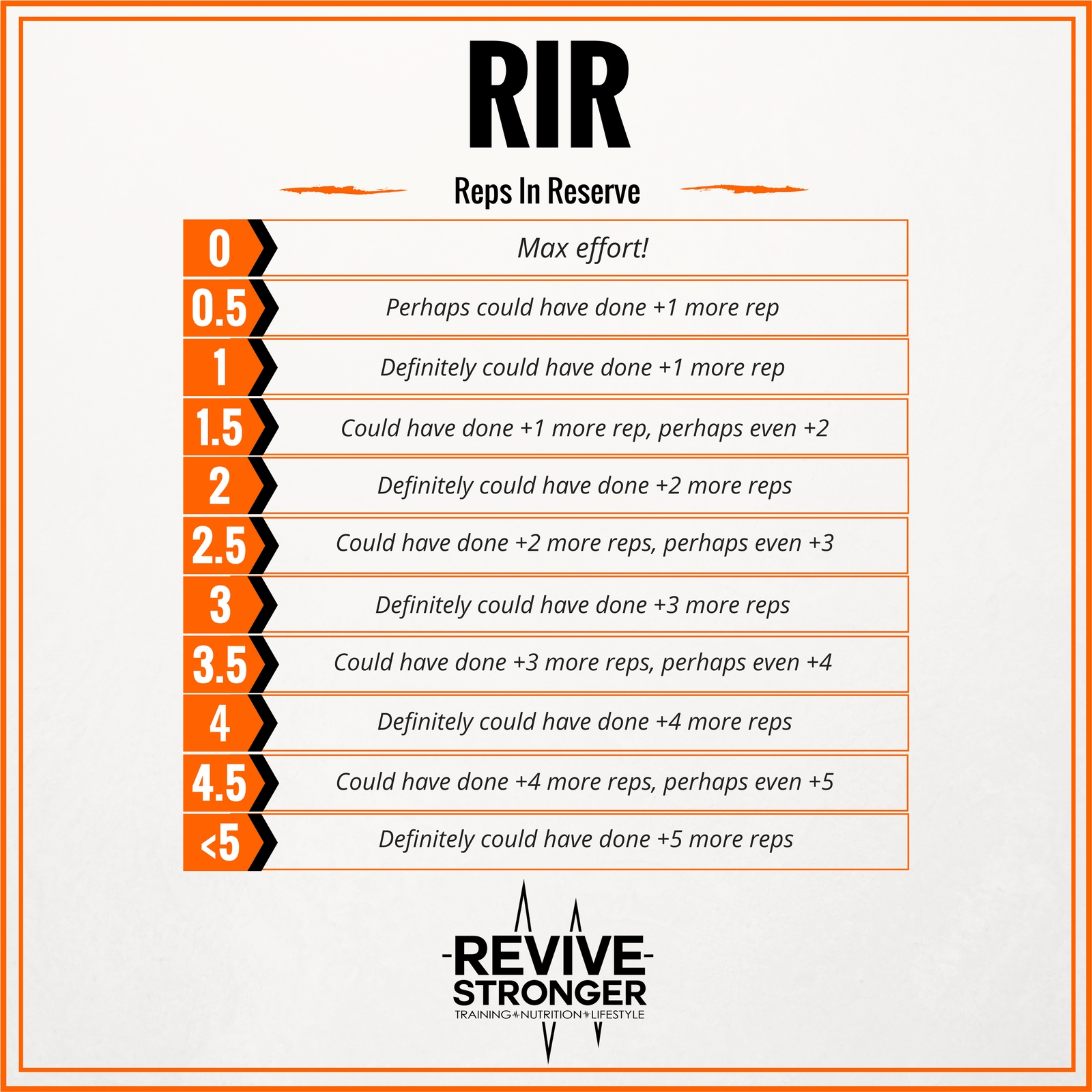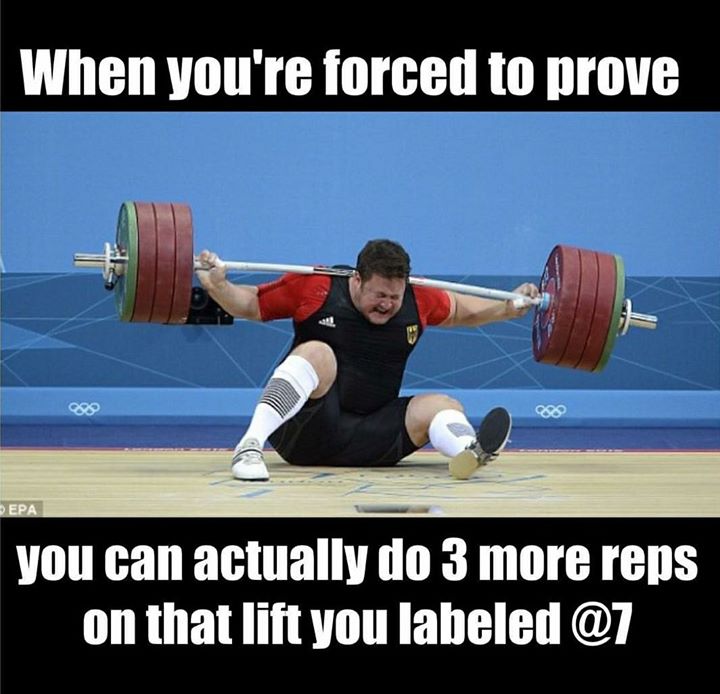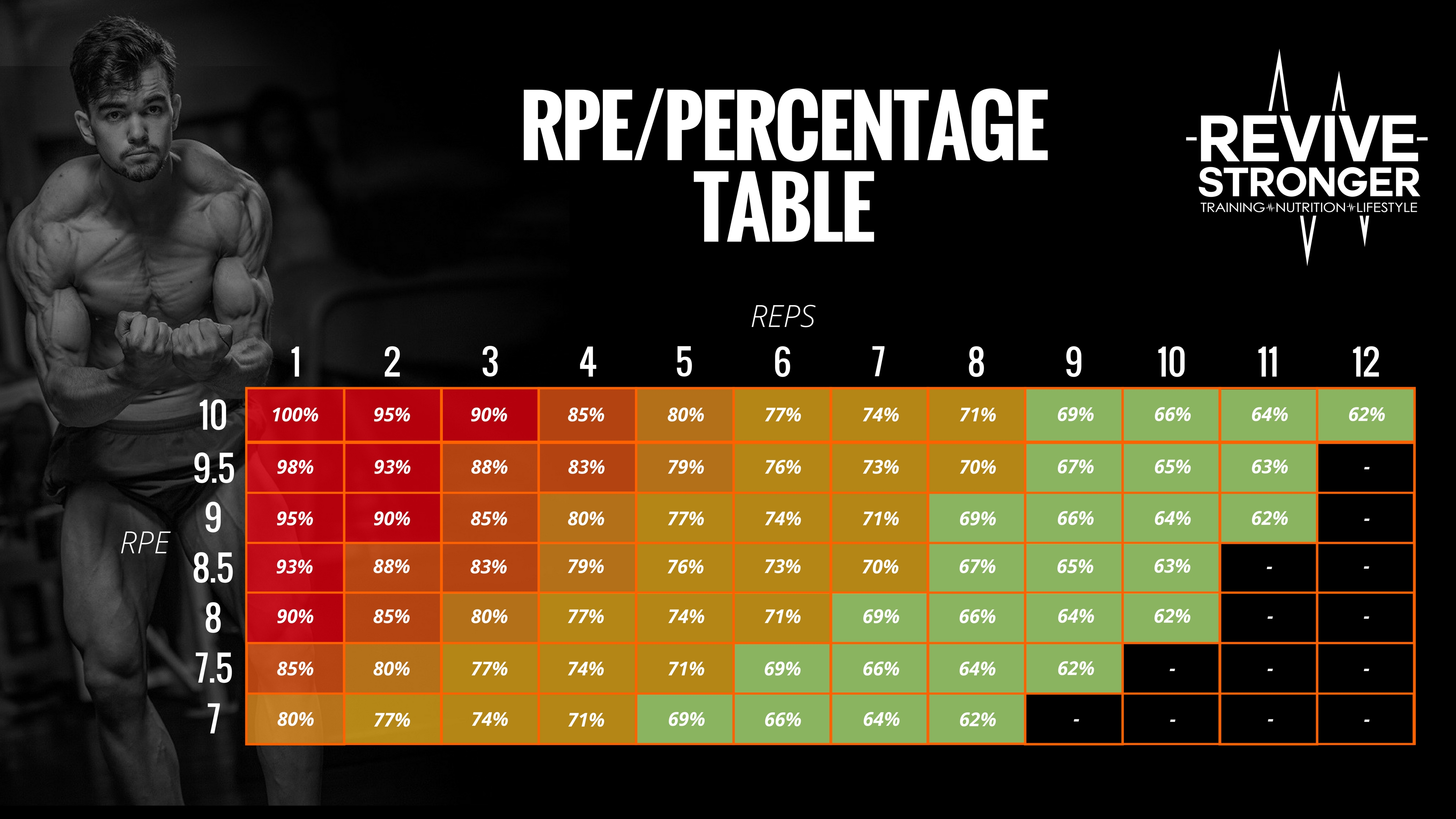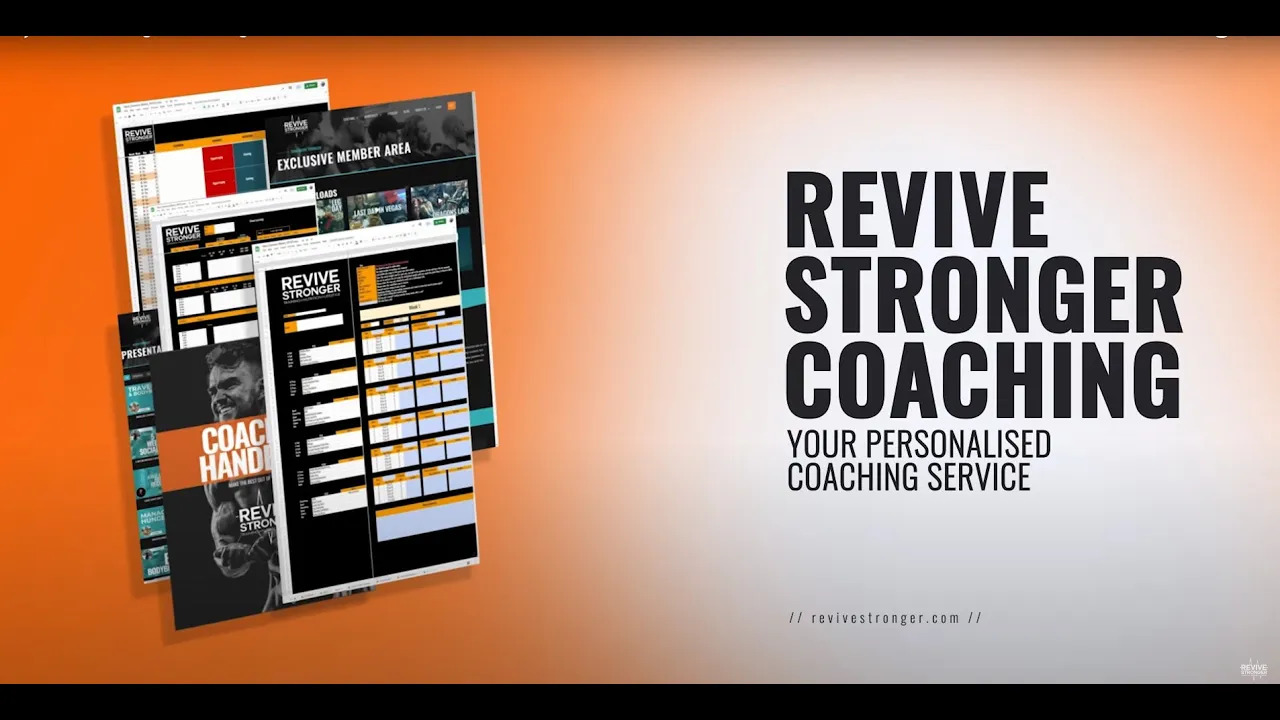
Revive Stronger
Become a true master: Autoregulation
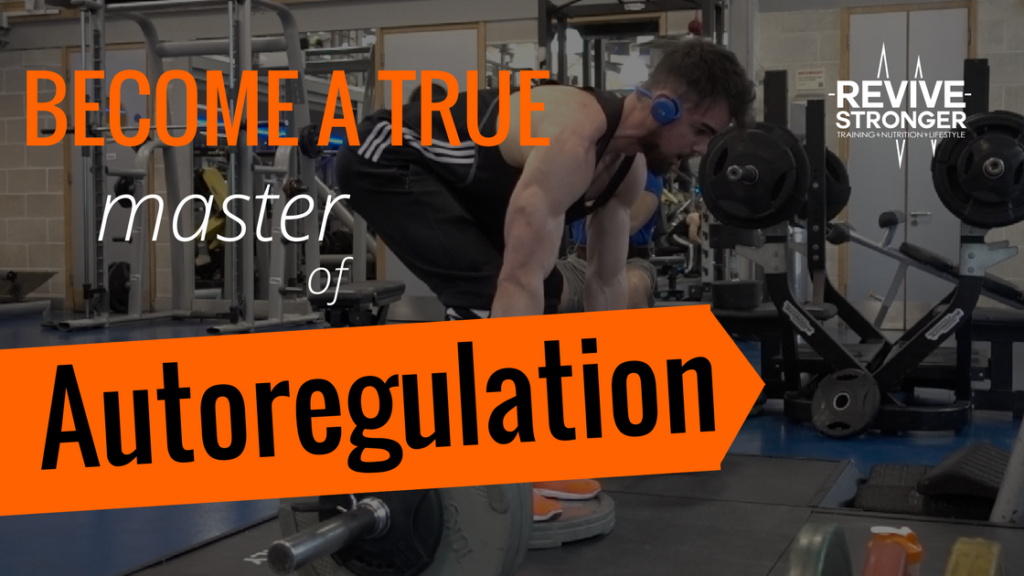
People have been using autoregulation for ages:
In their training.
Nutrition and recovery
To strategically periodize the intensity & volume throughout a macrocycle to consciously overreach or allow for additional rest. Most of you are probably familiar with some form of autoregulation but as a physique/strength athlete, it will most likely be…
RPE – Rate of perceived exertion or RIR – Repetitions in reserve.
For those who aren’t familiar with these terms, don’t worry, I’ll get to that in a minute.
Perhaps you have already heard about autoregulating your training without even knowing it. If you haven’t heard about the different names for autoregulation then you must have at least heard someone saying “Bro, you have to listen to your body” and if you haven’t even heard that one…well, then you better sit in your gravity capsule to Namek because otherwise, we have a lot of things to go through.
Table of Contents
What is RPE/RIR?
Now, before we can get into why and how to implement one form of autoregulation into your training we need to understand what it actually is and entails. Basically, autoregulation is a form of adjusting your training and nutrition based on several different factors.
The most common form of autoregulation in the realm of strength training is the “Ratings of perceived exertion” in short RPE.
RPE – Rate of Perceived Exertion
Ever since Mike Tuchscherer came up with the RPE System (Rate of perceived exertion) for strength training it seems like everyone is doing it in some way or another. Mike’s RPE scale is based on the concept of The Borg Scale by Gunnar Borg which basically was used by coaches to gauge an athlete’s level of intensity in training and competition.
Perceived exertion was an individual’s rating of intensity, based on physiological signs such as breathing, heart rate, sweating, etc. The scale was ranging from 6-20 with 6 being no physical exertion and 20 being full exhaustion. (and please don’t ask about the logic behind creating a scale from 6-20…I really don’t know)
The problem with this was that exhaustion alone based on the named factors doesn’t give a clear definition of the effort or intensity. Furthermore, the traditional RPE scale was developed for aerobic training and not specifically for resistance training. A true 1RM will not cause as much sweating, heart rate spike, heavy breathing as a 100m sprint would and still, both would be probably rated with 20.
Mike Tuchscherer saw the potential behind a scale which is based on an objective measure of how hard you feel like you’re working during a set, exercise, etc. But Mike wanted to make it more applicable for strength training.
He then came up with the RPE Scale, which ranged from 1-10 as you can see below:
Everyone who knows Mike and his methodologies are aware of him being a highly intelligent, analytical guy when it comes to optimising the training for himself and his clients. Besides him being strong as shit as well…
He has even written a short book about how to implement his RPE system in your own training.
RIR – Repetitions in reserve
Basically, it’s exactly the same as the RPE system just in reverse. But not only that, the RPE system includes RIR already. You remember? You’re simply asking yourself how many more reps you could have done.
However, I find that it’s easier for people to understand when they are new to the concept of RPE. I know, it doesn’t seem complicated at first with a scale ranging from 1-10 where 10 stands for max effort but believe me when I tell you that I’ve worked with several people who had never heard of RPE before and who were super confused about the whole system.
Since then, I’m simply using an RIR scale, ranging from 0-5 for all of my clients, where 0 is a max effort, because obviously, 0 stands for not being able to do an additional rep, 1 means you could have done +1 repetition, etc. and usually I don’t prescribe RIR above 5 simply because it is too light to cause any meaningful stress and the further away you get from volitional failure the harder it gets to judge anyway.
Generally speaking, the RPE dictates the RIR and vice versa.
Me personally, I moved away from the RPE scale and towards RIR, simply because it’s more intuitive. Asking yourself how many reps you got left and doing that tiny bit of math in your head simply doesn’t seem as right as saying “I had 2 reps in reserve”. It seems like the RPE scale is more commonly used for Powerlifting and RIR for pyhsique sports. Whatever method you decide to use, it’s basically the same and nothing to really worry about. For this article though, I’ll from now on refer to RIR when talking about autoregulation.
Why you want to use RIR?
You know those days on which you feel either golden or like someone secretly snug into your room while you were asleep and treated your body like Steven Seagal did with all his enemies.
Strength is dynamic and highly dependent on several factors, such as sleep, rest, stress, nutrition…ehm, basically everything. This means, that your estimated 1RM will differ each and every single training session.
Let’s say your training programme calls for 5×5 reps with 85%. When you then load the bar based on what you’ve done the previous week, it could either be one of the following scenarios;
1] Either it was too small of a stimulus because you’re feeling well recovered and great.
2] It could be the perfect intensity to make progress and still recover fine.
3] Or you simply get crushed which then leaves you even more drained.
Now, the chance of you picking an inappropriate weight with a percentage based system significantly higher than it is the right intensity for that given workout.
85% of your 1RM on one day isn’t 85% of your 1RM on another.
This isn’t to say that percentage based programmes are utterly useless, they definitely aren’t but they’re quite limited in how accurate they can be. As already mentioned, so many things can influence your performance on a given day and add to that, each athlete is different in their anatomical build, training history, recovery capabilities, etc.
Autoregulation will help you with individualising your training programme to your needs, goals, desires while taking your physio- & psychology as well as external influences into consideration.
You see, you can easily limit yourself in either doing too much or too little without it being necessary. I would even say that there’s a higher risk of you getting injured. Training in a fatigued state while still aiming for a certain % by all means, will only lead to you getting hurt eventually.
How to use RIR?
So far we’ve only talked about autoregulation in the sense of intensity.
However, autoregulation isn’t limited to only judging the perceived intensity but there are many ways how you could implement it. I’ll get to how you can use autoregulation in other ways than determining the weight on the bar at another time, for now, let’s focus on RIR and how you can start implementing the most common form of autoregulation into your training.
Furthermore, it must be said that it isn’t mutually exclusive with prescribing or planning intensity using a percentage-based or autoregulated system.
If you’ve never worked with autoregulation before and you haven’t got a decent awareness in terms of preparedness, then jumping straight into using RIR only, will not just be overwhelming at first but you’re probably missing out or even get hurt along the process.
RIR can be implemented for any kind of training really, no matter if it’s for hypertrophy, strength, power, endurance, etc. Both the RIR has a large-scale range, however, if you want to gauge an accurate RIR, I’d recommend you stay in the RIR range of 0 to 5. Because of the subjective measure, it’s close to impossible to give an accurate judgement on the effort the further away you are from volitional failure. This doesn’t mean that lower RIR doesn’t have its place, they most definitely do e.g. warm-ups, injury, technique work, explosive training, recovery.
Generally speaking, when hypertrophy and strength is your main goal, you want to stay in the higher RIR range such as 0-4 RIR for most of your training time. Depending on how you’re structuring your programme and where you’re currently at in regards to your annual training plan, I’d recommend you sticking to the following guidelines:
- Volume: 1-4 RIR
- Intensity: 1-5 RIR
- Deload: 3-5 RIR
Again, these are only general guidelines and it’s highly dependent on the lifter, his training & nutrition plan, etc. Also, it comes down to the programme structure and exercise selection as well. Going with a higher RIR on an isolation movement will probably be less risky than going to RIR@1 on deadlifts every single session. Not only will deadlifts have a much bigger stress on your CNS and overall recovery than a let’s say dumbbell lateral raise with 14kg.
Skill & Technique
Autoregulation is a skill that needs to be learned.
Studies by Zourdos et. al show that the more experienced a lifter, the more likely they get at estimating the right RIR. Not only were they able to gauge an RIR as they approach failure but when staying away from failure as well. Speaking of skill, the researchers also saw a correlation between lifting experience and an inverse association between scores and velocity. As the intensity increased the velocity decreased, however, novices experienced a steep decrease in performance.
In simple terms, novices saw a steep decrease in performance the closer they got to failure whereas more experienced lifters were able to “grind” through heavier attempts without failing. This comes back to neuromuscular efficiency and through repetitive practice of a specific movement pattern.
What does this all have to do with you?
Well, now you know that you shouldn’t just rely on RIR completely from now on but rather slowly implement it into your training programme. But, before you get familiar with the RIR system, I must note one thing; Technique is still king!
Technique is still king!
This can’t be stressed enough.
So many people lie to themselves when gauging RIR. “Bro, I could have easily gotten 2 more reps”…and if they were honest with themselves, two reps were already 4 reps ago. When we’re talking about training to failure we’re always meaning “Technical breakdown”, Ie. the moment in which you no longer can sustain proper form. There’s no reason for ingraining a bad lifting technique, the only thing that differentiates your warm-ups from your 1RM should be the bar speed and load on the bar.
Now finally, let’s get on how you can implement it into your training.
I’d recommend you take a 3 step approach:
Step 1:
Run a percentage based programme or your current routine as normal and try to gauge the RIR after each given set without changing anything to get familiar with rating your sets.
Step 2:
As soon as you feel like you’re getting the hang of it, continue running your percentage based but plan your RIR you want to hit on each given set in advance. You can take the chart below to see what %= ~RIR
Step 3:
Now that you’ve run a couple of mesocycles of an autoregulated approach in conjunction with a percentage based system, perhaps it’s time to give it a shot in running a mesocycle purely with RIR.
This scale should only serve as a baseline for you.
When you’re getting experienced with gauging RIR of certain % of your estimated 1RM you can go ahead and start customising that scale to your needs. There’s a big chance of you either being really good at higher intensities/lower reps or lower intensity/higher reps. Over time you can customise it by the type of lifter you are but don’t put too much stock onto a customised RIR chart because as mentioned earlier, RIR is a form of autoregulation and strength isn’t a static value.
As soon as you’re confident enough to gauge RIR of a given set you can use the handy tool of AMRAP-sets (as many reps as possible) every once in while to see if you’re actually judging RIR correctly, you’re overshooting or even hold yourself back. Best is probably to use an AMRAP set at the end of a training cycle to see if you have improved and or to test your RIR ratings as well.
Not rarely have I experienced a lifter who claimed they are far away or were close to failure at a certain lift. When I then prescribed an AMRAP set, they were either already closer to failure than expected or were able to do way more reps than previously expected.
Go HERE to learn more about the “Fitness-Fatigue Model“
What are the caveats?
There definitely are some…but on a positive note, all of them are probably things you can work on!
Athlete type and mindset
The more skilled & mature you become as a lifter and the longer you’re using autoregulation, the better you’ll get at judging the true RIR of a lift or workout. However, your mentality plays a major role and so does the type of lifter you are.
- When you’re the emotional, overthinking type of athlete it can either be good or bad, your emotional state is like a rollercoaster. Sometimes you have massive highs and feel like you can move mountains…however, sometimes that one little comment from your boss ruins the entire day.
- If you’re too analytical, it can cause the so-called “paralysis by analysis”, in which you’re perhaps overthinking and putting too much stock into unnecessary details.
- But perhaps you’re one of those “go hard or go home” lifters; either you go full balls to the wall or it’s not even worth hitting the gym at all. RIR@0 is your best friend and you still could have done a couple of additional reps.
- Or are you always questioning your capabilities and potential?
All of them have some good/not so good characteristics. Everyone can take a piece from one another and implement it in their cognitive behaviour in regards to lifting. You want to have a healthy and honest approach when it comes to your training. I like to call it being “rationally aggressive”; go overboard and you’ll get injured and easily burned out…be too cautious and you’ll leave a lot of potential progress on the table. Leave your ego and doubts at the door to get the most out of it.
Try to get “in the zone” and replicate this sensation every single time you approach the bar.
Takes time to learn
It can take quite some time to get a feeling for autoregulation and by that, I’m talking about ages.
Awareness is something that comes with time.
- What is easy, what is hard?
- Was this actually slow or did the weight move quickly?
- Do I really feel fatigue or is it simply my mood?
- Am I honest to myself or are my emotions fooling myself?
- and much more…
…and even then it’s not guaranteed that you’ll ever get the hang of it. As you perhaps realised previously already, autoregulation isn’t for everyone but I wouldn’t recommend to just avoid it altogether. The longer you’re in the game, the better you’ll get at listening to your body. Recording videos of yourself will help you massively to see how fast or slow a weight actually moved. Combine that with your collected data from your training log and you’ll build a pretty good awareness over time.
This is a skill that can be developed, here at Revive Stronger we get our clients to post in their form videos to a private facebook group, along with their RIR so we can then judge their accuracy.
Not always the right tool for the job
Let’s say that you’re deep in your contest prep.
You’re lethargic and feeling like crap on a daily basis.
You’re depleted and your legs are feeling wobbly when taking a walk already. There’s a high chance that you simply don’t want to get into that uncomfortable zone when lifting.
Your body is already stressed enough and the mentality of a lifter can change severely the deeper they get into their contest prep. Perhaps you might want to consider taking a hybrid based system, Ie. percentage & RIR-based training routine to ensure you’re still getting a sufficient amount of intensity.
Another example would be when you’re trying to do some technique practice. You don’t want to go too high with the intensity but you don’t want to go too low either. The execution of a lift can change drastically depending on the intensity you’re using and still, gauging and RIR of @4-5 is harder than you think. Furthermore, it gets quite hard to tell if you would have been able to 4+ reps or only 1+ rep when you’re doing your high rep/light load work.
You might end up working too hard which then has an impact on your total training volume and especially your recovery or you end up doing way too little to make optimal progress. Again, perhaps autoregulating isn’t the best you can do in such a situation.
Takeaway points
You see, implementing RIR can be an extremely powerful tool in your training.
The more advanced you’ll get the more you should make use of it. However, this doesn’t mean that you should rely on RIR entirely for the rest of your training career. Percentage based training routines still have their value and both aren’t mutually exclusive.
It might seem hard at first to get the hang of it but with time comes perfection, but when used correctly, it can take your training to the next level!
- Start off slowly and familiarise yourself with RIR
- Autoregulation delivers the appropriate training stimulus needed to progress
- The RIR for a given workout will depend on a bunch of factors
- Be rationally aggressive
- The more experienced you are the more you want to use autoregulation in some kind of way
What Next?
Join our free facebook group or add us on snapchat (revivestronger) and ask your question there, I will respond asap. Or if you’re after a fresh training programme we have a free 4 week plan using DUP that you can download for free here.
One more thing…
Do you have a friend who would love the above?
Share this article with them and let me know what they think.
References:
1. Hackett DA, Johnson NA, Halaki M, and Chow CM. A novel scale to assess resistance-exercise effort.
J Sports Sci 30: 1405-1413, 2012.
2. Zourdos MC, Klemp A, Dolan C, Quiles JM, Schau KA, Jo E, Helms E, Esgro B, Duncan S,
Garcia Merino S, and Blanco R. Novel Resistance Training-Specific Rating of Perceived Exertion Scale
Measuring Repetitions in Reserve. Journal of strength and conditioning research 30: 267-275, 2016.
3. Helms ER, Storey A, Cross MR, Brown SR, Lenetsky S, Ramsay H, Dillen C, and Zourdos MC.
RPE and Velocity Relationships for the Back Squat, Bench Press, and Deadlift in Powerlifters. Journal of
strength and conditioning research, 2016.
4. Han J, Park S, Jung S, Choi Y, and Song H. Comparisons of changes in the two-point discrimination
test following muscle fatigue in healthy adults. Journal of physical therapy science 27: 551-554, 2015.
5. Shimano T, Kraemer WJ, Spiering BA, Volek JS, Hatfield DL, Silvestre R, Vingren JL, Fragala
MS, Maresh CM, Fleck SJ, Newton RU, Spreuwenberg LP, and Hakkinen K. Relationship between
the number of repetitions and selected percentages of one repetition maximum in free weight exercises in
trained and untrained men. Journal of strength and conditioning research 20: 819-823, 2006.
6. Tuchscherer M. The Reactive Training Manual: Developing your own custom training program for
powerlifting. Reactive Training Systems, 2008, p 15.
7. Helms ER, Cronin J, Storey A, and Zourdos MC. Application of the Repetitions in Reserve-Based Rating
of Perceived Exertion Scale for Resistance Training. Strength and conditioning journal 38: 42-49, 2016.
We are a personal coaching service that helps you achieve your goals. We want you to become the best version of yourself.



